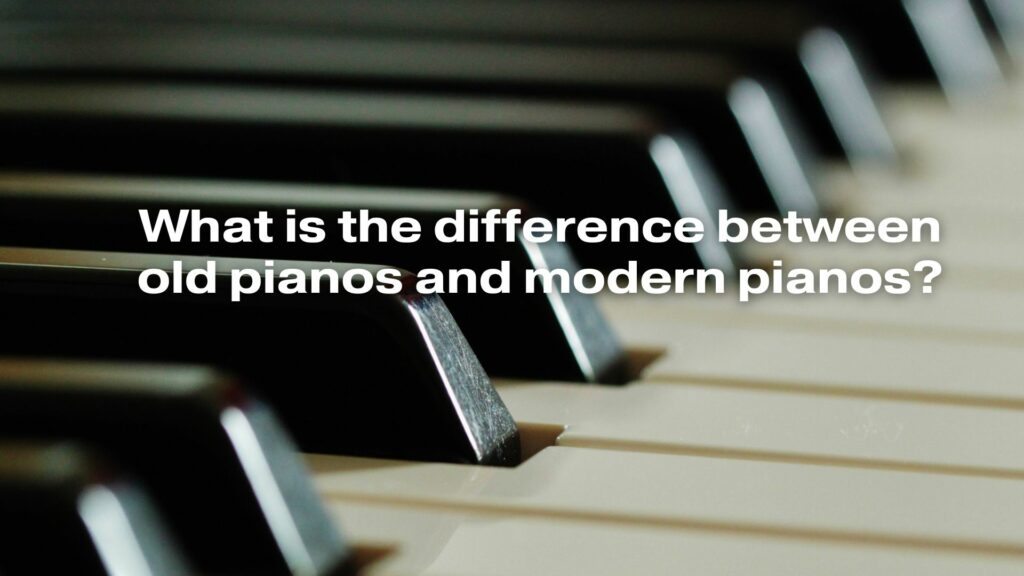Old pianos and modern pianos differ in several key aspects, including design, construction, materials, and technology. These differences impact their sound, playability, and overall characteristics. Here are some of the main distinctions between old and modern pianos:
1. Design and Size:
- Old Pianos: Vintage or antique pianos often feature different design aesthetics, with ornate cabinet styles and decorative elements. They can vary in size, but many older pianos are larger and heavier than their modern counterparts.
- Modern Pianos: Modern pianos tend to have sleeker and more minimalist designs. They are often built to be more space-efficient, with smaller sizes for contemporary living spaces.
2. Materials:
- Old Pianos: Vintage pianos often used traditional materials like solid wood for the cabinet, soundboard, and action components. Some older pianos have ivory keys, and the strings may be made of gut or lower-quality wire.
- Modern Pianos: Modern pianos incorporate a wider range of materials, including laminated woods and composite materials. Keytops are typically made of plastic or synthetic materials, and the strings are made of high-quality steel wire.
3. Action and Mechanism:
- Old Pianos: Older pianos may have less advanced actions and mechanisms. Some antique pianos feature simpler, direct blow actions.
- Modern Pianos: Modern pianos are equipped with more sophisticated and refined actions, including the use of composite parts and precision engineering, resulting in improved responsiveness and playability.
4. Soundboard and Frame:
- Old Pianos: Vintage pianos often have wooden soundboards and frames, which can be more susceptible to cracking and warping with age and changes in humidity.
- Modern Pianos: Modern pianos use advanced materials and techniques, such as laminated soundboards and reinforced frames, to improve stability and enhance sound quality.
5. Sound and Tone:
- Old Pianos: Vintage pianos may produce a warmer, mellower tone. The tone can vary significantly among old pianos, and some may have unique characteristics that make them sought after by musicians.
- Modern Pianos: Modern pianos are designed to produce a more powerful, dynamic sound with a broader tonal range. They are engineered to project well in large concert halls.
6. Technological Advancements:
- Old Pianos: Vintage pianos lack many of the technological features found in modern pianos, such as digital interfaces, player piano systems, or recording capabilities.
- Modern Pianos: Modern pianos can incorporate advanced technology, including digital enhancements that allow for recording, playback, and integration with electronic devices.
7. Price and Availability:
- Old Pianos: Antique and vintage pianos can vary widely in price based on their brand, age, condition, and historical significance. They may be more challenging to find in good condition.
- Modern Pianos: New pianos are readily available from various manufacturers and come in a wide range of price points to suit different budgets.
In summary, old pianos and modern pianos differ in terms of design, materials, action, sound, and technological features. Vintage or antique pianos may have unique qualities and appeal to collectors and musicians seeking a specific tone or character, while modern pianos are known for their reliability, advanced playability, and technological capabilities. The choice between old and modern pianos depends on individual preferences and needs.


